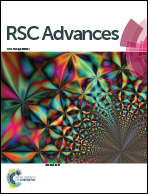Preparation and evaluation of novel surface molecularly imprinted polymers by sol–gel process for online solid-phase extraction coupled with high performance liquid chromatography to detect trace patulin in fruit derived products
Abstract
A new-type of surface molecularly imprinted polymers (MIPs) for the selective recognition of trace contaminant mycotoxin patulin (PAT) was prepared using oxindole as the dummy template by means of sol–gel polymerization on activated silica beads. Synthesis conditions were optimized by changing some factors to obtain MIPs with controllable adsorption capacity, selectivity and hardness. The prepared MIPs were characterized using Fourier transform infrared spectrometry and scanning electron microscopy, and its adsorption properties were evaluated by static and dynamic adsorption tests. These proved that the prepared MIPs showed excellent affinity, high selectivity adsorption and fast kinetics towards PAT. Then the imprinted material was employed as an online solid-phase extraction (SPE) sorbent for the separation and concentration of PAT in food samples, which was subsequently detected by high performance liquid chromatography (HPLC). The parameters of online MIPs based SPE-HPLC including the pH of loading sample, the loading flow rate and eluting time were optimized in detail. The factor of enrichment and the limit of detection (S/N = 3) of the established MIPs-SPE-HPLC method were 125 and 0.5 μg L−1, respectively. The linear range (r2 > 0.990) was 2–40 μg L−1, and the precision of peak area (relative standard deviation, RSD) of nine consecutive enrichments for 2.0 μg L−1 PAT detection was 7.80%. PAT in apple juice, pear juice, haw juice and haw flakes was determined at three spiked levels with recoveries ranging from 60.13 to 97.60%, suggesting the established MIPs-SPE-HPLC method is promising for the accurate quantification of PAT at trace levels in fruit derived samples.


 Please wait while we load your content...
Please wait while we load your content...